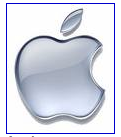 On August 27, the U.S. Patent & Trademark Office (USPTO) published a series of patent applications from Apple Computer including this one, #20090216531, for “PROVIDING TEXT INPUT USING SPEECH DATA AND NON-SPEECH DATA.” Please note that this is merely a notification concerning the application for a patent that was originally filed in February 2008. Nonetheless – given all of the development that has been done by a multiplicity of companies large and small seeking to define how spoken words will blend with other forms of user input to compose messages, control media players, populate search boxes or simply input and compose messages – this patent, if granted, has the makings of a sweeping power grab by the master of the mobile, multi-application user interface for the industry’s dream machines – the iPhone and iPod Touch.
On August 27, the U.S. Patent & Trademark Office (USPTO) published a series of patent applications from Apple Computer including this one, #20090216531, for “PROVIDING TEXT INPUT USING SPEECH DATA AND NON-SPEECH DATA.” Please note that this is merely a notification concerning the application for a patent that was originally filed in February 2008. Nonetheless – given all of the development that has been done by a multiplicity of companies large and small seeking to define how spoken words will blend with other forms of user input to compose messages, control media players, populate search boxes or simply input and compose messages – this patent, if granted, has the makings of a sweeping power grab by the master of the mobile, multi-application user interface for the industry’s dream machines – the iPhone and iPod Touch.
Scrolling down through the USPTO site, you’ll see that Apple provides dozens of implementation scenarios (albeit with reference to figures and flow-charts that are not embedded in the page). The descriptions start with simple entry of text for SMS, email or IM. It also discusses how speech input can be used in editing mode along with entry from a physical or virtual keyboard. But text entry is just the beginning. The patent application gets into specific detail about how users of a mobile device with a media player, camera, motion detector, WiFi capabilities (have I described the iPhone yet?) will seamlessly move from inputting text via spoken word or virtual keyboard.
Apple’s engineers, specifically the named inventor Kazuhisa Yanagihara, have clearly given a tremendous amount of thought to the challenges of creating a high-quality mobile user interface. The “text input as speech data and non-speech data” is an interesting angle and the level of detail in the application is impressive. Is it wholly original and unobvious? That remains to be seen. Is it wise for Apple to get the application into the U.S. government? No doubt. The most positive thing that can be said about this sort of filing is that it shows directionally where all mobile interface developers must go to support access to the multiplicity of applications that the spirit of Recombinant Telephony makes possible.
Categories: Articles

 NiCE Interactions 2025: Agentic AI, Better Data, and a Whole Lot of Partnership
NiCE Interactions 2025: Agentic AI, Better Data, and a Whole Lot of Partnership  Getting It Right: What AI Agents Actually Mean for Customer Support (Webinar)
Getting It Right: What AI Agents Actually Mean for Customer Support (Webinar)  Beyond the Basics: How AI Is Transforming B2B Sales at TP
Beyond the Basics: How AI Is Transforming B2B Sales at TP  Five9 Launches Agentic CX: Toward AI Agents That Reason and Act
Five9 Launches Agentic CX: Toward AI Agents That Reason and Act